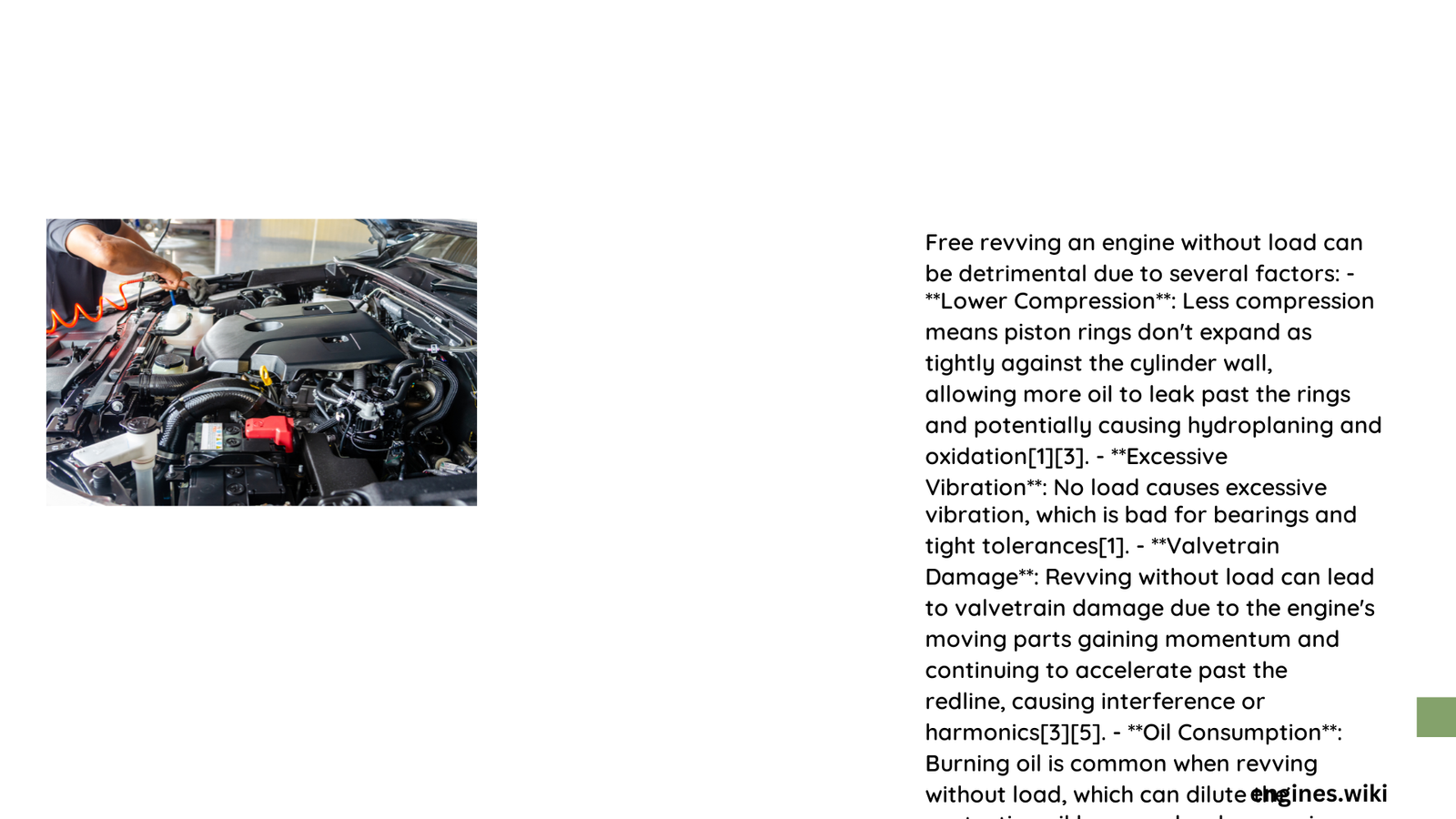Free revving an engine can be detrimental to your vehicle’s long-term health, causing significant mechanical stress and potential damage. While it might seem harmless, repeatedly pushing an engine to high RPMs without load can lead to accelerated wear on critical components like piston rings, cylinder walls, and bearings. Understanding the nuanced risks and mechanisms of engine wear is crucial for maintaining your vehicle’s performance and preventing costly repairs.
What Happens When You Free Rev an Engine?
How Does Free Revving Cause Mechanical Stress?
Free revving creates unique mechanical challenges that can compromise engine integrity:
Reduced Lubrication Dynamics
- Oil circulation becomes less efficient at high RPMs without load
- Reduced combustion chamber pressure prevents optimal piston ring sealing
- Increased friction between moving components
Quantifiable Wear Mechanisms
| Component | Potential Damage | Risk Level |
|---|---|---|
| Piston Rings | Increased wear, oil leakage | High |
| Cylinder Walls | Surface degradation | Medium-High |
| Bearings | Uneven wear, potential failure | High |
What Are the Immediate Risks of Free Revving?
Immediate risks include:
– Premature valvetrain component wear
– Increased thermal stress on engine materials
– Potential bearing and connecting rod damage
– Reduced overall engine efficiency
How Does Free Revving Impact Long-Term Performance?
Performance degradation occurs through:
1. Gradual reduction in horsepower output
2. Decreased torque generation
3. Increased oil consumption
4. Potential compression loss
Technical Insights into Engine Mechanics

Why Do Engines Suffer from High-RPM Operation?
Engines are designed to operate most efficiently under load. Free revving disrupts this balance by:
– Creating excessive vibration
– Generating uneven mechanical stress
– Preventing optimal thermal and lubrication cycles
What Do Automotive Experts Recommend?
Professional mechanics consistently advise:
– Warm up engines gradually
– Avoid prolonged high-RPM operation without load
– Maintain consistent, moderate engine speeds
– Follow manufacturer-recommended maintenance schedules
Practical Prevention Strategies
How Can You Protect Your Engine?
Recommended practices include:
– Use proper warm-up techniques
– Monitor engine temperature
– Invest in quality lubricants
– Regular maintenance and inspections
Cost Implications
Potential repair costs for engine damage:
– Valvetrain repairs: $1,000 – $3,000
– Bearing/connecting rod replacement: $2,000 – $5,000
– Complete engine overhaul: $4,000 – $8,000
Conclusion
Free revving an engine is not recommended. While occasional high-RPM operation might seem inconsequential, consistent practice can lead to significant mechanical degradation and expensive repairs.
